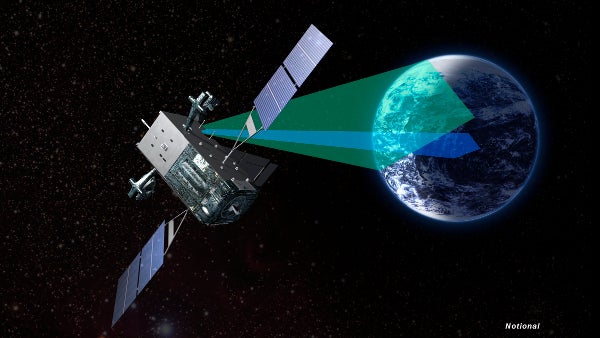
The third highly elliptical orbit (HEO-3) payload of the US Air Force’s Space Based Infrared System (SBIRS) has successfully completed payload integration and ambient functional testing.
Conducted by a Northrop Grumman-led team, the payload integration tests involved validation of initial electrical functionality following mechanical integration, harness and bond joint checks, as well as command confirmation and primary/secondary power inspection.
During the ambient function tests, the payload demonstrated its functional baseline performance and readiness to undergo the next phases of trials, which include electromagnetic interference (EMI) and thermal vacuum characterisation tests.
Northrop Grumman Military and Civil Space business unit vice president, Stephen Toner, said: "The HEO-3 payload is on track to provide the same high-quality global persistent infrared surveillance capabilities as its predecessors."
Lockheed Martin Overhead Persistent Infrared (OPIR) mission area vice president, Jeff Smith, said the completion of testing mark a significant step forward in the integration and build-up of the HEO-3 payload.
"We are focused on delivering the HEO-3 payload and providing our warfighters with unprecedented infrared surveillance capabilities," Smith added.
How well do you really know your competitors?
Access the most comprehensive Company Profiles on the market, powered by GlobalData. Save hours of research. Gain competitive edge.

Thank you!
Your download email will arrive shortly
Not ready to buy yet? Download a free sample
We are confident about the unique quality of our Company Profiles. However, we want you to make the most beneficial decision for your business, so we offer a free sample that you can download by submitting the below form
By GlobalDataFollowing characterisation tests, the payload will be put through prototype qualification acceptance trails, prior to delivery to the air force.
The SBIRS satellites are designed to deliver timely and precise warning for missile launches to the US government using a combination of four geosynchronous earth orbit (GEO) satellites, two HEO payloads, as well as related ground hardware and software.
Additional tasks include providing support for a range of critical missions, such as missile defence, technical intelligence and battlespace awareness.
The system is due to be delivered in 2013.
Lockheed Martin and Northrop serve as the SBIRS prime contractor and payload integrator, and are led by the Infrared Space Systems Directorate at the USAF Space and Missile Systems Center, at Los Angeles Air Force Base in US.
Image: A depiction of the US Air Force’s SBIRS GEO-1 satellite in orbit. Photo: courtesy of Lockheed Martin Corporation ©.







